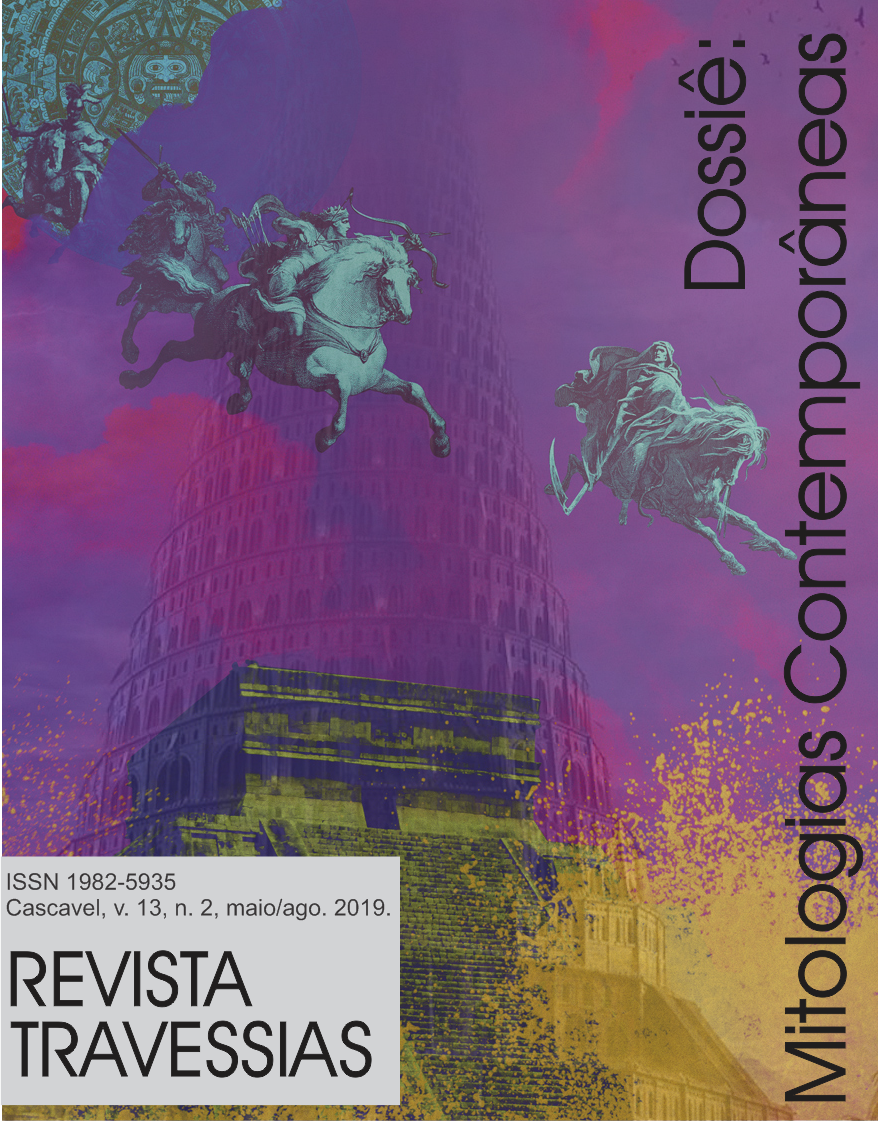The contemporary grotesque in Matéi Vișniec’s theater
Keywords:
Grotesque, Matéi Vișniec, Contemporary Theater.Abstract
The laughter, according to Bergson, speaks to the intelligence. For being a purely human phenomenon, for the laughter to happen, there must be a perception of the comic effect and its comprehension. Sometimes what is unusual also causes the laughter, although it is due to the strangeness effect it produces, and it also takes, many times, to reflection, as the manifestations of the grotesque, present in different media and artistic expressions. In the works of the contemporary playwright Matéi Vișniec, which have a strong political character, the grotesque is often the source of the laughter provoked by his work, but also what guides the reader/spectator to the understanding of the problem raised by the author. Being the playwright a self-stated adept of the Theater of the Absurd, he frequently recurs to uncommon conclusions, in which the grotesque outstands, giving the tone of the plays. It is possible to find different expressions of the grotesque in his writings, as in the text Decomposed theatre or the human trashcan (1994/2012). This article, based in the propositions of Cabral and Soares (2002), Kayser (1986), among other theorists that categorize and recover the senses of the grotesque, searches the comprehension of the images of the grotesque in the dramatic work of the Romanian author and the effects of meaning from the employment of the aesthetical category here mentioned, through the reflection provided by it. In Decomposed theatre, the grotesque, under different forms, reveals as a guide for the construction of the images and allegories present in the text and also for possible meanings that might emerge from the play.Downloads
References
ALENCAR JR., Leão de. Do Cômico, Grotesco, Irônico, Obsceno e Farsesco. Revista de Letras, Fortaleza, v. 1/2, n. 24, p.80-88, jan/dez. 2002. Anual. Disponível em: http://www.periodicos.ufc.br/revletras/article/view/2225. Acesso em: 15 nov. 2018.
BAKHTIN, Mikhail. A cultura popular na Idade Média e no Renascimento: o contexto de François Rabelais. Tradução: Yara Frateschi Vieira. São Paulo: Editora Hucitec, 1987.
CABRAL, Muniz Sodré A.; SOARES, Raquel Paiva de A. O Império do Grotesco. Rio de Janeiro: Mauad, 2002.
CALAZANS, Selma. Grotesco. IN: CEIA, Carlos. E-Dicionário de Termos Literários. Disponível em: http://edtl.fcsh.unl.pt/encyclopedia/grotesco/. Acesso em: 14 Nov 2018.
CORNIS-POPE, Marcel (ed.). New Literary Hybrids in the Age of Multimedia Expression: Crossing borders, crossing genres. Amsterdã/Filadélfia: John Benjamins Publishing Company, 2014.
DYAKONITSYNA, Anna. Gely Korzhev: I Have the Right. IN: The Tretyakov Gallery Magazine. Disponível em: https://www.tretyakovgallerymagazine.com/articles/3-2016-52/gely-korzhev-i-have-right. Acesso em: 15 nov. 2018.
KAYSER, Wolfgang. O Grotesco. Configuração na Pintura e na Literatura. São Paulo: Perspectiva, 1986.
SILVA, Jason de Lima e. Sobre o horror em Goya: Caprichos e Desastres da Guerra. Artefilosofia: Revista de Estética e Filosofia da Arte do Programa de Pós-graduação em Filosofia - UFOP, Ouro Preto, n. 24, p.132-160, jul. 2018. Semestral. Disponível em: https://www.periodicos.ufop.br/pp/index.php/raf/article/view/862. Acesso em: 15 nov. 2018.
VIȘNIEC, Matéi. Teatro decomposto ou o homem lixo – Textos para um espetáculo-diálogo de monólogos. Tradução: Luiza Jatobá. São Paulo: É Realizações, 2012.
VOLOBUEF, Karin. Victor Hugo e o Grotesco em Notre-Dame de Paris. Lettres Françaises, Araraquara, n.5, p.25-34, 2003. Semestral. Disponível em: https://periodicos.fclar.unesp.br/lettres/article/view/738. Acesso em: 15 nov. 2018.
Downloads
Published
How to Cite
Issue
Section
License
Creative Copyright Notice
Policy for Free Access Journals
Authors who publish in this journal agree to the following terms:
1. Authors keep the copyright and grant the journal the right of first publication, with the work simultaneously licensed under the Creative Commons Attribution License, which allows sharing the trial with acknowledgment of authorship and initial publication in this journal.
2. Authors are authorized to take additional contracts separately, for non-exclusive distribution of the work version, published in this journal (eg publish in institutional repository or as a book chapter), with acknowledgment of authorship and initial publication in this journal.
3. Authors are allowed and encouraged to publish and distribute their work online (eg in institutional repositories or on their personal page) at any point before or during the editorial process, as this can generate productive changes, as well as increase both impact and citation of the published trial (See The Effect of Free Access).
Creative Commons License
This work is licensed under a Creative Commons Attribution–NonCommercial-shareaswell 4.0 International License, which allows you to share, copy, distribute, display, reproduce, completely or part of the work, since there is no commercial purpose, and authors and source are cited.



